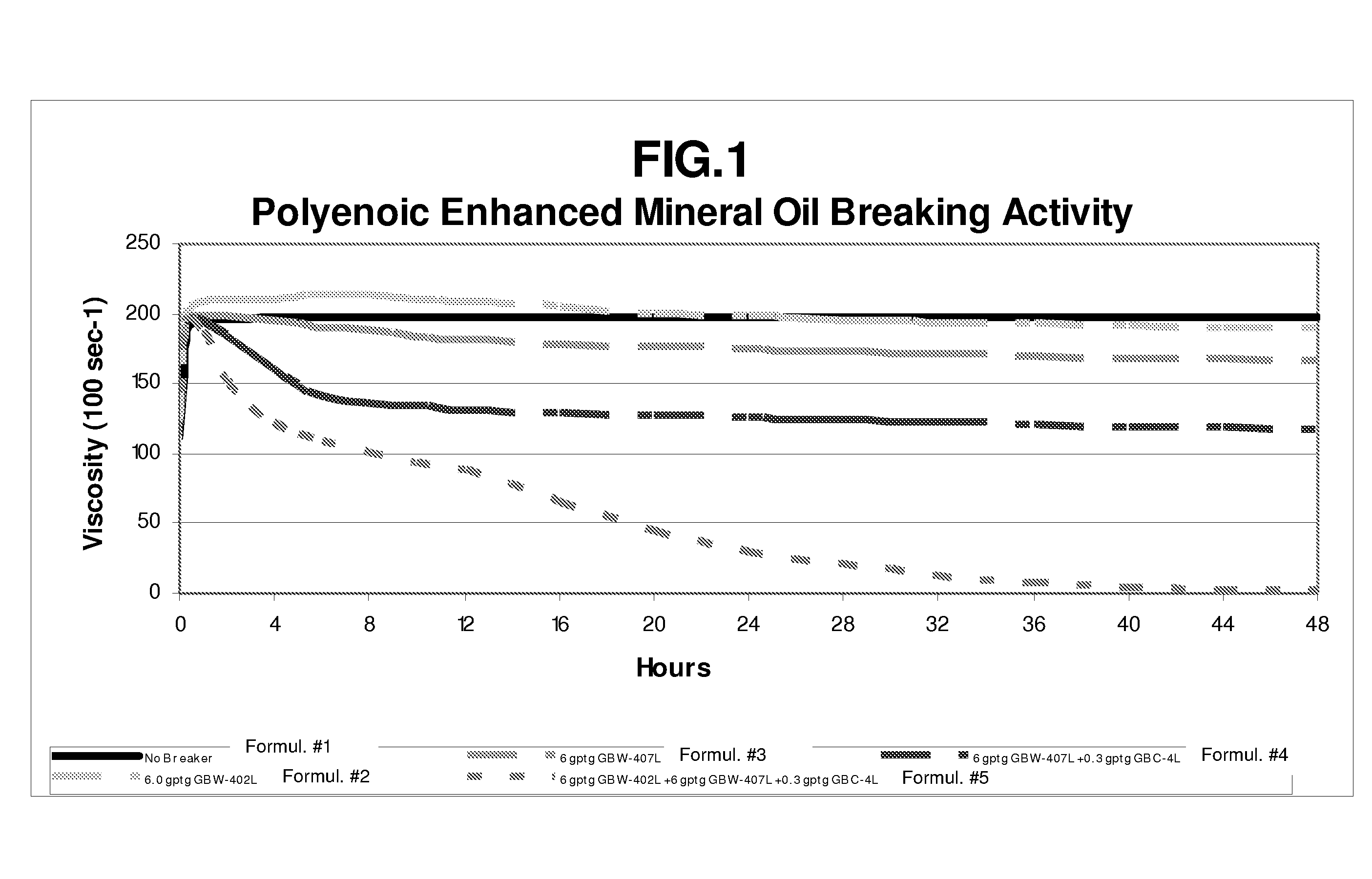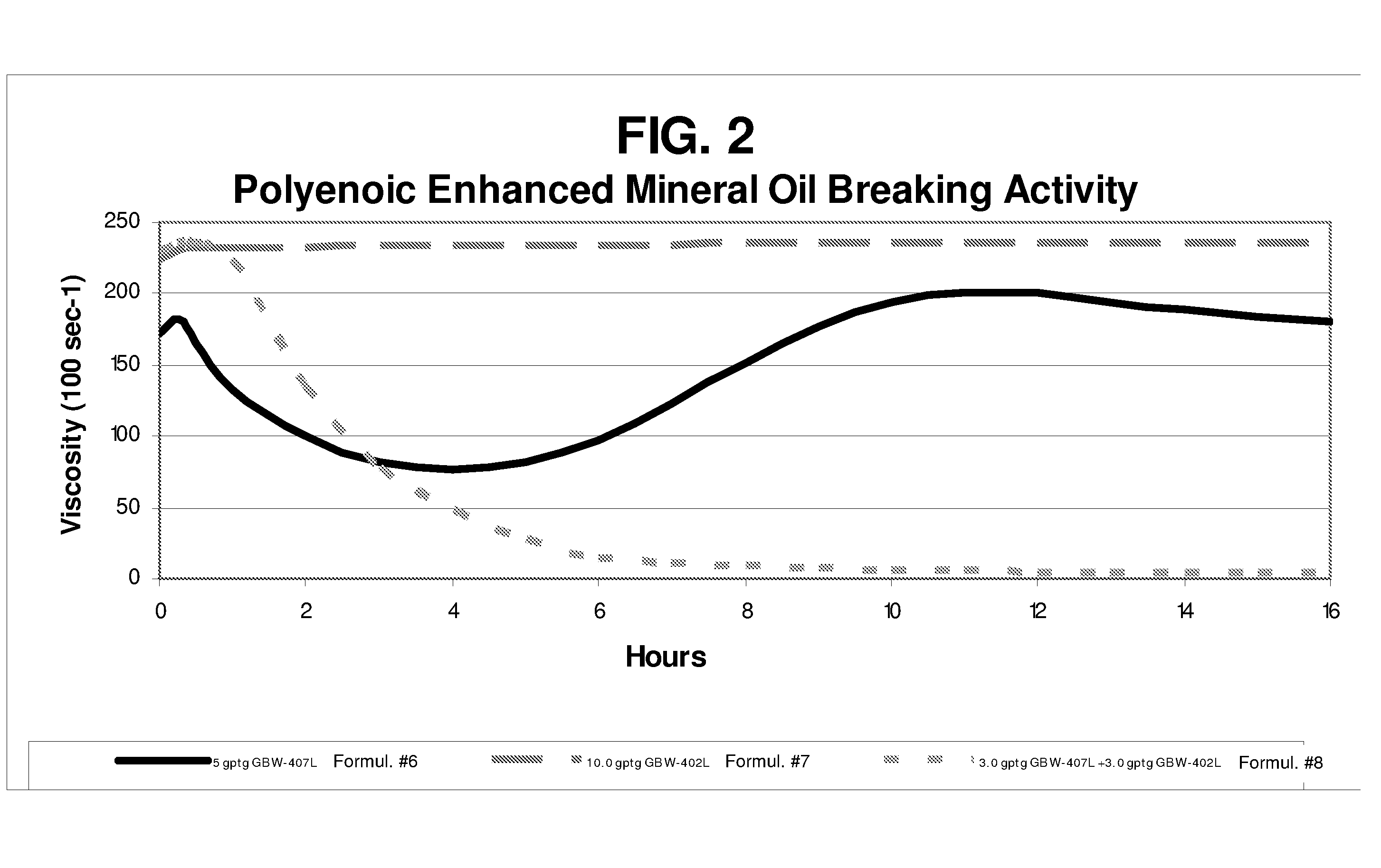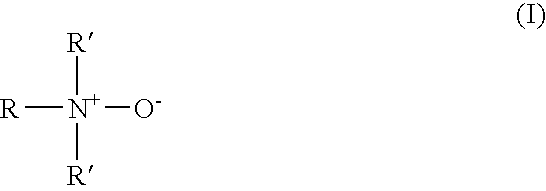Unsaturated Fatty Acids and Mineral Oils as Internal Breakers for VES-Gelled Fluids
a technology of unsaturated fatty acids and mineral oils, applied in the field of gelled aqueous treatment fluids, can solve the problems of fluid deformation, complex development of suitable fracturing fluids, and inability to close or heal cracks or fractures completely, so as to reduce the viscosity, increase the viscosity, and reduce the effect of viscosity
- Summary
- Abstract
- Description
- Claims
- Application Information
AI Technical Summary
Benefits of technology
Problems solved by technology
Method used
Image
Examples
Embodiment Construction
[0018]Synergistic results have been surprisingly discovered when both an unsaturated fatty acid (UFA) (e.g. a polyenoic acid) and a mineral oil are used together as internal breakers to reduce the viscosity of VES-gelled aqueous fluids. Unexpectedly, the use of both types of breakers together more easily and more efficiently breaks VES-gelled aqueous fluids. As the data discussed below will show, faster VES-gel breaking may occur than would be expected by simply combining what each individual VES internal breaker contributes alone. The discovery appears to be a very localized weakening of the VES micelles, analogous to a “pinhole” effect, so that the micelles become much more susceptible to one or both of the VES breakers. This “pinhole effect” may be considered a weakening, e.g. a reduction in the thermodynamic energy that exists between the VES head groups with themselves, water and counter-ions present (such as the salts in the brine) at a few locations on the VES micelle structu...
PUM
| Property | Measurement | Unit |
|---|---|---|
| kinematic viscosity | aaaaa | aaaaa |
| temperature | aaaaa | aaaaa |
| wt % | aaaaa | aaaaa |
Abstract
Description
Claims
Application Information
 Login to View More
Login to View More - R&D
- Intellectual Property
- Life Sciences
- Materials
- Tech Scout
- Unparalleled Data Quality
- Higher Quality Content
- 60% Fewer Hallucinations
Browse by: Latest US Patents, China's latest patents, Technical Efficacy Thesaurus, Application Domain, Technology Topic, Popular Technical Reports.
© 2025 PatSnap. All rights reserved.Legal|Privacy policy|Modern Slavery Act Transparency Statement|Sitemap|About US| Contact US: help@patsnap.com



